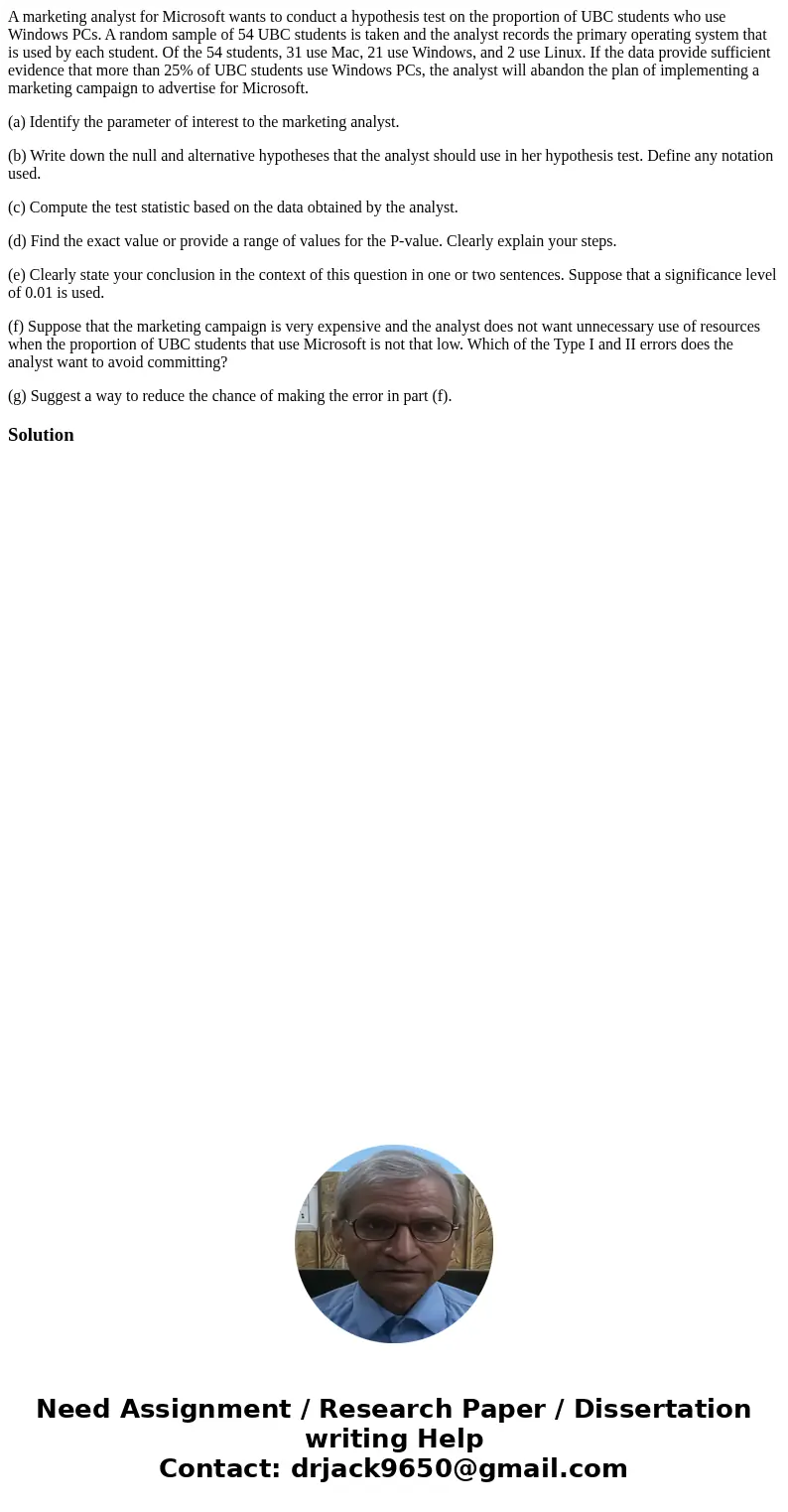A marketing analyst for Microsoft wants to conduct a hypothe
A marketing analyst for Microsoft wants to conduct a hypothesis test on the proportion of UBC students who use Windows PCs. A random sample of 54 UBC students is taken and the analyst records the primary operating system that is used by each student. Of the 54 students, 31 use Mac, 21 use Windows, and 2 use Linux. If the data provide sufficient evidence that more than 25% of UBC students use Windows PCs, the analyst will abandon the plan of implementing a marketing campaign to advertise for Microsoft.
(a) Identify the parameter of interest to the marketing analyst.
(b) Write down the null and alternative hypotheses that the analyst should use in her hypothesis test. Define any notation used.
(c) Compute the test statistic based on the data obtained by the analyst.
(d) Find the exact value or provide a range of values for the P-value. Clearly explain your steps.
(e) Clearly state your conclusion in the context of this question in one or two sentences. Suppose that a significance level of 0.01 is used.
(f) Suppose that the marketing campaign is very expensive and the analyst does not want unnecessary use of resources when the proportion of UBC students that use Microsoft is not that low. Which of the Type I and II errors does the analyst want to avoid committing?
(g) Suggest a way to reduce the chance of making the error in part (f).
Solution

 Homework Sourse
Homework Sourse